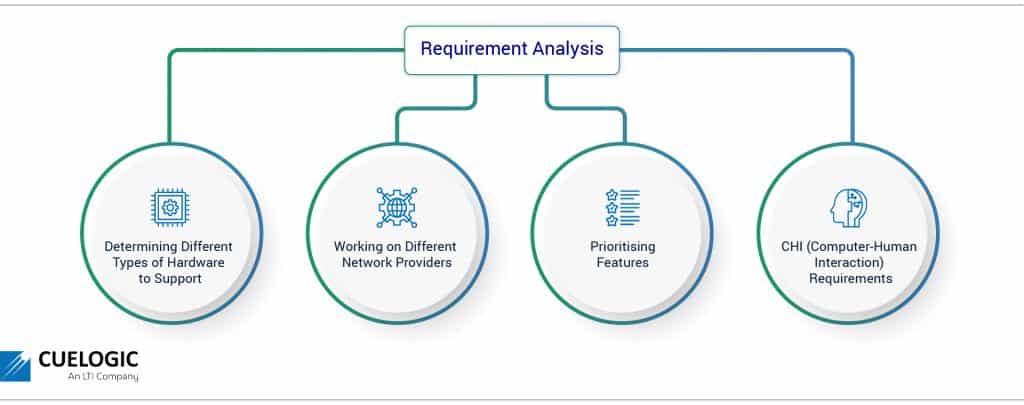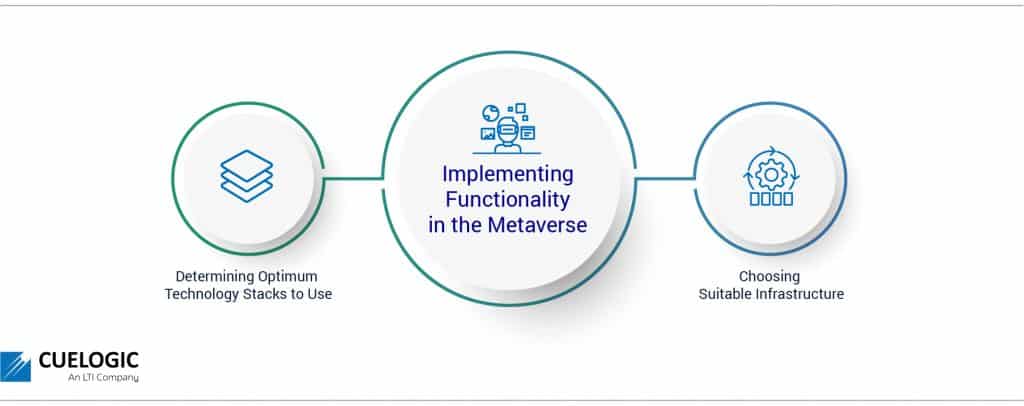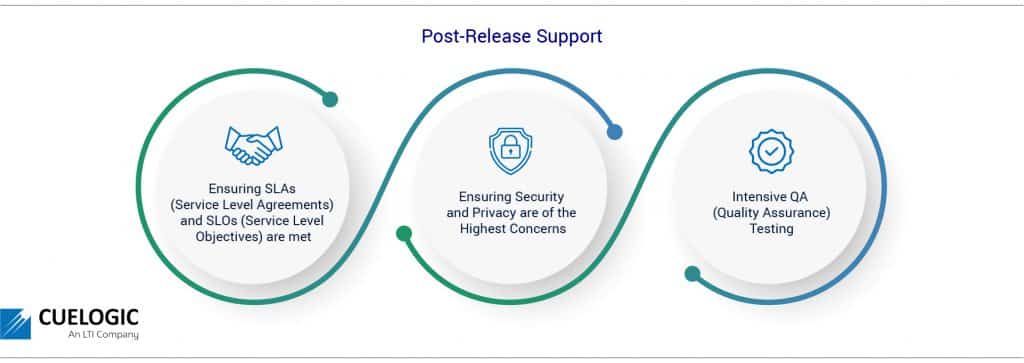An Overview of the Metaverse
Everyone has heard of the metaverse since it is being hailed as the expected next internet iteration. However, since the metaverse will conceptually impact every aspect of human existence, it is relevant to understand what it means before it permeates our daily existence.
It can be defined as an online space where people use ‘avatars’ or ‘virtual representations’ to represent themselves and interact with each other. The metaverse can be used to collaborate for work, play games, or simply socialize. It can be thought of as a digital copy of our world, and the scope of its potential is infinite. Theoretically, there can be a digital copy in the metaverse of every item that exists in the physical world.
The concept of the metaverse has been around for decades. However, it remained an aspirational idea till now. The advent of improved AR (Augmented Reality), VR (Virtual Reality), and the Internet of Things has made this digital copy of our world a potential reality that people could adopt, transforming and shaping how we live.
Companies Growing in the Metaverse:
Innovations in technology are only as relevant as the companies that adopt them. The list of interested companies is significantly longer for the metaverse, with all the biggest technology companies making significant investments in the realm.
Mark Zuckerberg has such great faith in the concept that he launched an umbrella company named ‘Meta’, inspired by the metaverse, which encompasses the companies Facebook, Instagram, Whatsapp, and the VR headset company, Oculus.
The amount of users and personal information the organization has makes its stake in the metaverse extremely significant.
Meta’s faith in the metaverse popularity is so significant that the company has invested over ten billion dollars in building its version of the metaverse.
Google is another front-runner in the adoption and proliferation of the technology. Their current VR capabilities are being deployed across smartphones now, allowing users to view different elements in the real world, helping innovation across education, manufacturing, and science.
Disney is another company making plans to expand its presence in the metaverse ecosystem. Disney’s CEO, Bob Chapek, clearly stated the company’s vested interest in the “three-dimensional canvas” of the metaverse as a new way of storytelling, which Disney is keen to adopt.
Microsoft is also a crucial player in the arena. They announced early functionality in their Teams messaging application, which would allow people to represent themselves as their ‘avatars’ across video meetings, chats, and emails. The adoption by Microsoft makes it a fact that it is here to stay in reality.
Several other organisations are keen to become part of the metaverse. For instance, the NFL (National Football League) in America has partnered with the gaming platform Roblox to ensure they get to stake their claim in the meta-universe as well.
The investments by the most prominent players in the tech industry have made the metaverse increasingly relevant for application developers, ensuring that this is an innovation that is here to stay.
The Scope of Product Engineering in the Metaverse:
The technology involved in the metaverse is varied due to the variety of techno-functional requirements involved. For example, hardware devices are involved like Virtual Reality headsets and devices for projecting Augmented Reality images; there is the need for real-time communication between avatars in shared spaces; and there is also the fact that some objects belong solely to the metaverse, while there are also copies of objects from the real world in the metaverse. A company that is working to make its place in the metaverse will need a team of capable software engineers, blockchain developers, NFT (non-fungible token) specialists, and network engineers.
The scope of product engineering in this field is thus vast and encompasses several disciples. We can divide the scope of product engineering into broadly three categories:
Requirement Analysis

Determining Different Types of Hardware to Support
To make the metaverse a success, it needs to be accessible to a range of users who will have their hardware preferences.
Working on Different Network Providers
It will be essential to optimize internet capabilities to run the high bandwidth requirements. For example, setting up content delivery networks and optimizing caches can help lower the threshold of the required bandwidth. It also improves the user’s experience.
Prioritizing Features
With such an ambitious plan, there is a need to prioritize features. Such as to allow users to get used to the features available. And provide their feedback before higher-ticket items are delivered. Again, timelines are critical in keeping audiences engaged.
CHI(Computer-Human Interaction) Requirements
Computer-Human Interaction is the heart and soul of the metaverse and requires adequate research. It avoids interacting with the digital systems involved with a keyboard and mouse. It uses wearable computing, gestures, and voice inputs.
Implementing Functionality in the Metaverse

Implementing products in the metaverse requires a thorough understanding of what is needed to add an object. One should also research how users should be allowed to interact with the object if it is expected to have any sort of ‘intelligence’ built-in.
Determining Optimum Technology Stacks to Use
Arguably, the most critical element in metaverse product engineering is delivering a robust codebase. This stage will require significant research and due diligence. Owing to the high-performance needs of what is essentially a real-time simulation of the real world.
Choosing Suitable Infrastructure
To ensure a reliable product, choosing the right kind of infrastructure is crucial, for instance, a cloud environment or an on-premise infrastructure. Furthermore, to keep costs low and to make the entry barrier achievable for the masses, teams need to ensure they create alliances with the correct infrastructure providers who can help them optimize costs to meet their requirements.
Post-Release Support

The metaverse is always ‘on’, like the real world. Therefore, the support required to keep it active and functional will be a make-it-or-break-it factor.
Ensuring SLAs (Service Level Agreements) and SLOs (Service Level Objectives) are met
Since the metaverse is like a simulation of the real world, every event in it occurs in near real-time. One day in the verse is analogous to half an hour in the real world. It will support real-time meetings and sports. Hence, it is crucial to ensure a high level of service availability. ~99.99% is a good aim! In case of any downtime, teams need to be equipped to resolve the issues within the predefined SLA time.
Ensuring Security and Privacy are of the Highest Concerns
Since users can connect and network with each other in the metaverse, and since they also have the option to expose their data, systems must be designed to have the highest safety requirements and follow the most stringent data privacy regulations.
Intensive QA (Quality Assurance) Testing
Owing to the criticality of the planned activities in the metaverse, like work and fitness, the testing of each component added to it is of utmost significance. Therefore, testing will need to be thoroughly vetted with a set of end-user testers. This will ensure elements can be used as they are intended.
How Can Cuelogic Help Your Company Become a Part of the Metaverse?
For companies that do not know how to begin to be a part of the metaverse, the path can seem almost too intimidating to start. It would be easier to go with an experienced team that can guide them through the initial complexities.
Cuelogic is a firm with expertise in understanding customer experiences and delivering a delightful product. Cuelogic’s offerings include complete product engineering, the adoption of cloud platforms, and working with big data. The team’s input on AI and IoT, coupled with their innovation cell, would make it easy for a company to expand into the metaverse.
The development processes at Cuelogic are driven by DevSecOps, ensuring security is prioritized and that development is quick. In addition, the Site Reliability Engineering (SRE) team can help with guidelines to meet expected availability requirements.
The Future of the Metaverse
The metaverse is still in its nascent stages. All the major technology companies are racing to innovate solutions that would fit well. With the recent norms of people working from home, workspaces in the metaverse are the first solutions expected to be adopted. Fitness and socializing are also bound to be one of the areas where the metaverse is successful in gaining traction.
Since the metaverse mimics reality, there is no dearth of ideas that can be implemented in the metaverse. With due planning and competent implementation, all companies can adapt their solutions to fit into the same
Conclusion
The metaverse will be the driver of Web 3.0. Companies need to ensure they understand the ecosystem and be ready to deploy products to the digital environment when required. Not keeping up with these changing trends could mean the loss of an entire avenue of business. Therefore, ensuring you know how to maneuver your way in the metaverse is a definite way to keep your company relevant.
